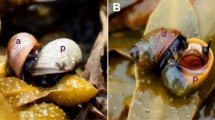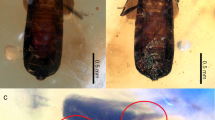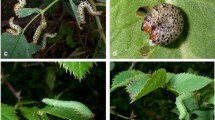Abstract
THE taxonomy of the arcuata-schaefferi group of Tenthredo sawflies has been a matter of interest both on the Continent1 and in Britain2 3 for some considerable time. The adults are strikingly similar and interspecific differences can be discerned in the females only. Good descriptions of larvæ have not been available for some of the species, and existing accounts in some cases appear vague and confusing, so that doubt exists as to whether reported differences are of inter- or intra-specific rank.
This is a preview of subscription content, access via your institution
Access options
Subscribe to this journal
Receive 51 print issues and online access
$199.00 per year
only $3.90 per issue
Buy this article
- Purchase on SpringerLink
- Instant access to full article PDF
Prices may be subject to local taxes which are calculated during checkout
Similar content being viewed by others
References
Enslin, E., Deuts. Ent. Z. (Beih.), 86–88 (1912–17).
Benson, R. B., Ent. Mon. Mag., 76, 231 (1940).
Benson, R. B., “Hymenoptera” (Royal Ent. Soc. Lond. Handbook 6.2b, 1952).
Author information
Authors and Affiliations
Rights and permissions
About this article
Cite this article
WATERHOUSE, F., SANDERSON, A. Geographical Colour Polymorphism and Chromosome Constitution in Sympatric Species of Sawflies. Nature 182, 477 (1958). https://doi.org/10.1038/182477a0
Issue date:
DOI: https://doi.org/10.1038/182477a0



